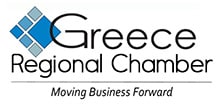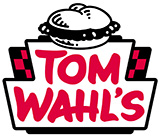By Timothy Aeppel and Ben Klayman
MARSHALL, Michigan (Reuters) – Fred Chapman has a message for Ford Motor Co, which is planning to build a sprawling factory on the outskirts of this town to make batteries for electric cars and which promises to employ 2,500 people.
“We don’t need jobs,” he says.
That’s a surprising view coming from Chapman, a 62-year-old toolmaker who has spent his whole career in manufacturing and watched, over the decades, as factory after factory in the region shut down, including one in Marshall that made auto parts where Chapman worked for nearly a decade. He now commutes to a factory job in a nearby city.
One of the most enduring ideas in the U.S. industrial heartland is that a manufacturing renaissance is necessary to finally shake the region’s “Rust Belt” image. And there are some signs that may be starting to happen.
Construction spending on U.S. factories more than doubled over the past year, hitting an annual rate of nearly $200 billion in May, according to the Census Bureau.
President Joe Biden has made a factory revival a centerpiece of “Bidenomics,” and his administration has pushed through legislation such as the Inflation Reduction Act and CHIPS Act that both injected direct funding and tax incentives for manufacturing construction.
Manufacturing now accounts for nearly 13 million U.S. jobs, the highest since 2008. But that belies the fact that factory work is increasingly a niche slice of the U.S. job market, accounting for just over 8.3% of jobs as of June, the lowest share ever.
Many of the new factories now going up are huge, involving multiple billion-dollar investments and creating thousands of jobs. Developers call these “megasites” and there’s a surge in their construction across the U.S.
SIGN OF THE TIMES: ‘STOP THE MEGASITE’
Ford officials have run up against resistance to its plans, however, in the latest iteration of a phenomenon known as NIMBY, which stands for “Not In My Back Yard.”
“It is a trend that we are seeing across the country,” said Gabby Bruno, Ford’s director of economic development, “and one that has really ramped up recently due to a number of these megasites finally being developed, especially in the clean energy space.”
Not everyone wants giant projects, even in places that would seem ripe for a factory renaissance. Soon after Ford’s project was announced in February, worried residents jammed town meetings, demanding more details on what was coming. Signs popped up on roadsides that plead: “Stop the Megasite.”
“This whole thing would be different if they had brought the community into the discussion,” said Glenn Kowalske, a retired engineer and one of the local leaders of the group fighting the project.
Opponents contend the project was rushed through final approvals and could cause environmental damage. It’s being built on former farm fields and woodlands next to a winding river just outside the city. Some worry the new technology of battery-building could lead to accidents, which might allow lithium to leach into the groundwater.
“I’m an engineer,” said Kowalske, “I know what lithium is – it’s a very volatile element.”
Ford’s Bruno said the carmaker’s plant design includes plans for such safety features as double-walled tanks, dedicated piping to collect industrial wastewater, and special fencing to prevent soil run-off into the nearby Kalamazoo River.
Critics also balk at the involvement of a Chinese company in the project: Contemporary Amperex Technology Co Ltd. Ford has a license to use CATL’s technology in the plant along with services provided by the Chinese battery giant.
Bruno countered CATL’s involvement is “limited” and the plant is 100% Ford’s.
The sheer size of the project is also a sore point. A parcel of about 750 acres has been zoned for industrial development since the 1960s, and over the years, other manufacturers have looked at building a factory here. But as local economic development officials worked with Ford and other prospective investors, it became clear they needed a much bigger footprint. They added two adjacent parcels that added about 1,100 acres.
Only about 950 acres will be used by Ford, said Bruno, with a portion of that set aside as a conservation easement along the river. The rest has been earmarked by economic development officials for suppliers and other developments.
To be sure, residents often fight big developments that threaten to alter the character of their communities. In some cases, they win, as happened when New York City residents rebuffed Amazon Inc’s efforts to build a second headquarters in the city.
COMMUNITY ROADBLOCKS
The more common outcome is delays, as local opponents mount legal challenges and throw up other roadblocks. In Marshall, residents petitioned to hold a referendum on the project, gathering over 800 signatures in a city of 6,800. That effort is stalled, however, after the town rejected the petition. Activists are now suing.
James Durian, CEO of the Marshall Area Economic Development Alliance, which has spearheaded the development, said he understands that some residents were startled by the project’s size and the speed at which it came together. But he contends that was necessary to land Ford.
Durian said he understands the concerns about the Chinese involvement in the project. The U.S. has an adversarial relationship with China, but he said it has gotten “a little weird and paranoid.”
Sue Damron, owner of Schuler’s Restaurant and Pub in downtown Marshall, supports the project. She believes factory workers will move to Marshall to work for Ford. “The people coming to work for Ford have spouses and children,” she said. “They will give me an employee base to add to my small business.”
But Chapman, the toolmaker, remains skeptical. His house sits across the street from the Ford site, known as BlueOval Battery Park, and he’s been approached about selling his house to the developers. But he doesn’t want to move.
Meanwhile, he sees a looming labor problem. The jobless rate in surrounding Calhoun County is 4.6% – above the national jobless rate of 3.6% – but still low by historical standards. He notes that the factory he works at, in nearby Battle Creek, has struggled to find skilled workers.
“I’m in the industry. I see it,” he said, adding that his company has even recruited workers from Mexico to fill positions. “It’s just weird, there’s not a supply of workers.”
(Reporting by Timothy Aeppel in New York and Ben Klayman in Marshall, Michigan; Editing by Dan Burns and Nick Zieminski)
Brought to you by www.srnnews.com





















